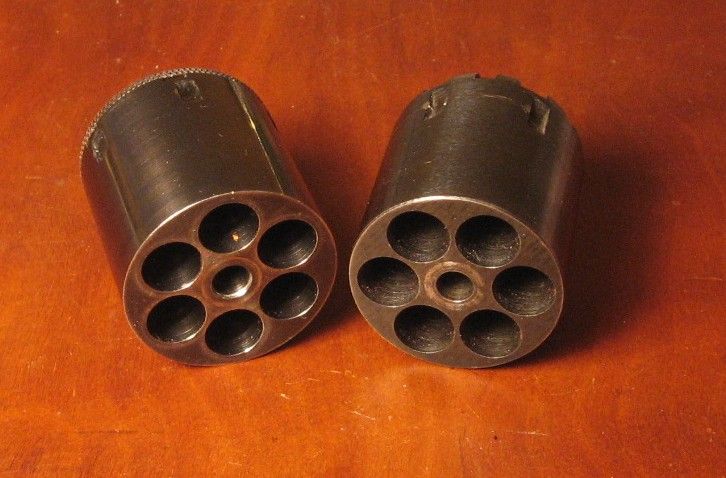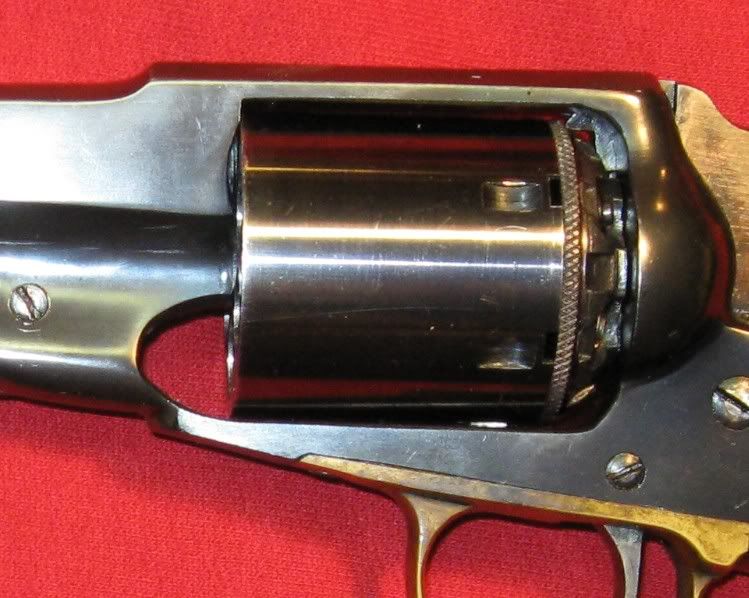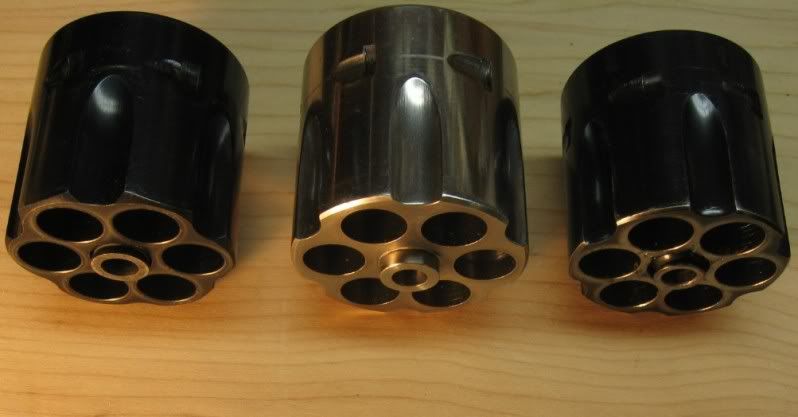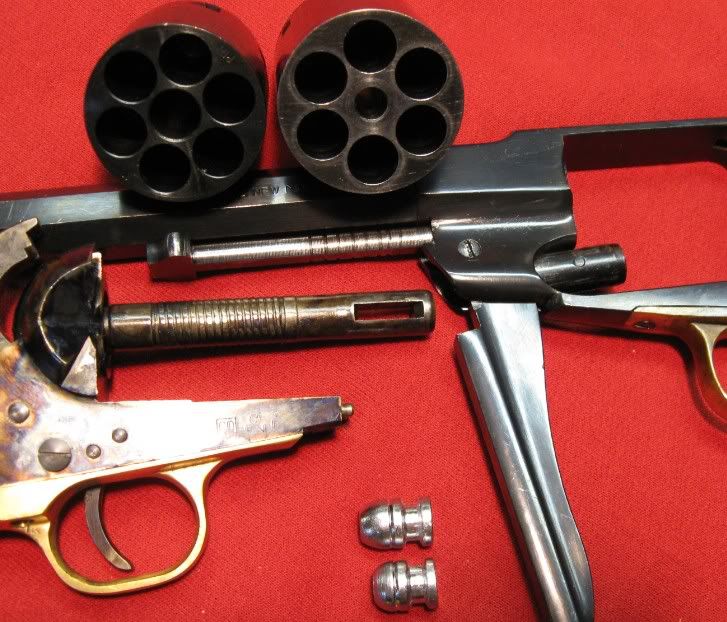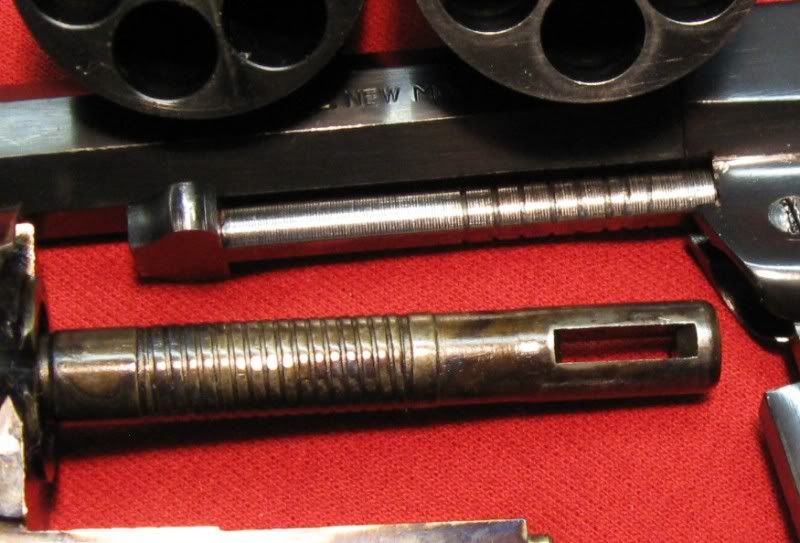Howdy
Welcome to the world of the 1858 Remington. These guns had a 'design flaw' that was later corrected when the Model 1875 cartridge revolver was introduced. The problem is the lack of a bushing on the front of the cylinder to protect the cylinder pin from being coated with fouling blasted out of the barrel/cylinder gap.
What happens is Black Powder fouling is blasted out of the gap at high pressure. It gets deposited on the cylinder pin and works its way down the pin between the pin and the cylinder. The fouling quickly builds up a hard crusty deposit. This is what causes the binding.
Later guns, including Colts, corrected this problem by putting a bushing on the front of the cylinder to shield the cylinder pin from the fouling blasted out of the gap.
Here are a conventional C&B cylinder as well as a cartridge conversion cylinder for a Remington. Notice they are flat across the front.
Notice how the cylinder butts right up against the frame. There is nothing to prevent fouling blasted out of the cylinder gap from being deposited directly on the cylinder pin. Yes, this is a cartridge conversion cylinder, but the idea is the same.
In this photo you can see the cylinder bushings, left to right, on an Uberti Cattleman, Ruger Vaquero, and 2nd Gen Colt.
Here is a closeup of the cylinder bushing on an old Colt. Notice how the barrel is set back into the frame, creating a gap between the cylinder and the frame. The cylinder bushing takes up the extra space. The bushing completely surrounds the cylinder pin. This puts a horizontal separation between the barrel/cylinder gap and the spot where the cylinder pin emerges from the bushing. This protects the cylinder pin from fouling blasted out of the b/c gap. I can shoot this old Colt all day long with Black Powder, as long as I use a BP compatible bullet lube, and it does not bind up.

OK, so how come the Colt replicas, which also do not have a cylinder bushing, can run longer without fouling than a Remington can? Two reasons. First off, the arbor of a Colt is larger in diameter, effectively spreading the fouling over a larger surface area. And the Colt has a helical clearance groove milled into the arbor. This gives the fouling blasted onto the arbor someplace to go, so it does not build up and bind the cylinder as quickly.
OK, enough about the problem, how about a solution? One solution is to install a bushing onto the cylinder of the Remington cylinder. This has been done and it does work. However it is expensive. A bushing has to be fabricated, the cylinder needs to be milled to accept the bushing, and the frame has to be relieved to accept the bushing.
Another simpler, marginally effective solution is to cut clearance grooves onto the cylinder pin. I cut these grooves by chucking the pin in a drill press and holding a file against it while it turned. The idea is you goop up the pin with lots of BP compatible grease, I use Bore Butter but any BP compatible grease will do. If you have a lathe you can do a better job cutting the grooves. The grooves could be cut a bit deeper than I cut them, to hold more goop, but don't cut them too deep or you will weaken the pin. This solution is not great, but it does help keep a Remmie running longer.
The bottom line is, unless you install a bushing in the cylinder, you will never get a Remmie to run as long without binding as a gun that has a cylinder bushing. Cutting clearance grooves will help, but not a whole lot. The best thing you can do is to keep the pin well greased, so that when the fouling reaches the pin it will remain moist. Moist fouling is a better lubricant than hard crusty fouling.

